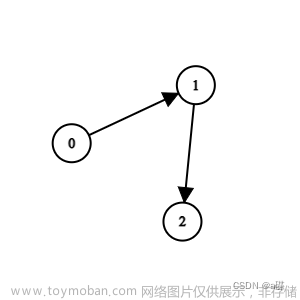128. Longest Consecutive Sequence
Given an unsorted array of integers nums, return the length of the longest consecutive elements sequence.
You must write an algorithm that runs in O(n) time.
Example 1:
Input: nums = [100,4,200,1,3,2]
Output: 4
Explanation: The longest consecutive elements sequence is [1, 2, 3, 4]. Therefore its length is 4.
Example 2:
Input: nums = [0,3,7,2,5,8,4,6,0,1]
Output: 9
Constraints:
- 0 < = n u m s . l e n g t h < = 1 0 5 0 <= nums.length <= 10^5 0<=nums.length<=105
- − 1 0 9 < = n u m s [ i ] < = 1 0 9 -10^9 <= nums[i] <= 10^9 −109<=nums[i]<=109
From: LeetCode
Link: 128. Longest Consecutive Sequence
Solution:
Ideas:
The idea behind this code is to find the length of the longest consecutive elements sequence in an unsorted array of integers. It does this by leveraging a hash table to achieve O(n) time complexity. Here’s a step-by-step explanation of the code:
-
Hash Table Creation: The code first creates a hash table to efficiently store and search for the numbers in the given array. The hash table is implemented using separate chaining, where each index in the table’s array represents a linked list of hash nodes.
-
Populating the Hash Table: The code iterates through the input array and inserts each number into the hash table. The key for each number is the number itself, and the index is calculated using the absolute value of the number modulo the table’s size.
-
Finding the Longest Consecutive Sequence: The main logic of the code iterates through the input array again, checking for the beginning of a consecutive sequence. It identifies the start of a sequence by looking for a number that doesn’t have a predecessor (i.e., there’s no (num - 1) in the hash table). Once the start of a sequence is found, it continues to check for consecutive numbers in the sequence, incrementing a counter for each successive number found.
-
Checking for Consecutive Numbers: To check whether a number is part of a consecutive sequence, the code looks up the number in the hash table using the contains function. This enables efficient O(1) average-time lookups, allowing the code to quickly identify consecutive numbers in the sequence.
-
Tracking the Longest Sequence: As the code identifies consecutive sequences, it keeps track of the length of the current sequence and updates the length of the longest sequence found so far. Once all numbers have been processed, the length of the longest consecutive sequence is returned.文章来源:https://www.toymoban.com/news/detail-649506.html
-
Memory Cleanup: Finally, the code includes logic to free the dynamically allocated memory for the hash table and its associated linked lists.文章来源地址https://www.toymoban.com/news/detail-649506.html
Code:
struct HashNode {
int key;
struct HashNode *next;
};
struct HashTable {
int size;
struct HashNode **array;
};
struct HashTable* createHashTable(int size) {
struct HashTable* table = (struct HashTable*)malloc(sizeof(struct HashTable));
table->size = size;
table->array = (struct HashNode**)malloc(sizeof(struct HashNode*) * size);
for (int i = 0; i < size; i++) {
table->array[i] = NULL;
}
return table;
}
void insert(struct HashTable *table, int key) {
int index = (key < 0 ? -key : key) % table->size;
struct HashNode *newNode = (struct HashNode*)malloc(sizeof(struct HashNode));
newNode->key = key;
newNode->next = table->array[index];
table->array[index] = newNode;
}
bool contains(struct HashTable *table, int key) {
int index = (key < 0 ? -key : key) % table->size;
struct HashNode *current = table->array[index];
while (current != NULL) {
if (current->key == key) return true;
current = current->next;
}
return false;
}
int longestConsecutive(int* nums, int numsSize) {
if (numsSize == 0) return 0;
struct HashTable *table = createHashTable(numsSize * 2);
for (int i = 0; i < numsSize; i++) {
insert(table, nums[i]);
}
int longestStreak = 0;
for (int i = 0; i < numsSize; i++) {
if (!contains(table, nums[i] - 1)) {
int currentNum = nums[i];
int currentStreak = 1;
while (contains(table, currentNum + 1)) {
currentNum += 1;
currentStreak += 1;
}
if (currentStreak > longestStreak) {
longestStreak = currentStreak;
}
}
}
// Free the allocated memory for the table
for (int i = 0; i < table->size; i++) {
struct HashNode* current = table->array[i];
while (current != NULL) {
struct HashNode* temp = current;
current = current->next;
free(temp);
}
}
free(table->array);
free(table);
return longestStreak;
}
到了这里,关于LeetCode //C - 128. Longest Consecutive Sequence的文章就介绍完了。如果您还想了解更多内容,请在右上角搜索TOY模板网以前的文章或继续浏览下面的相关文章,希望大家以后多多支持TOY模板网!









